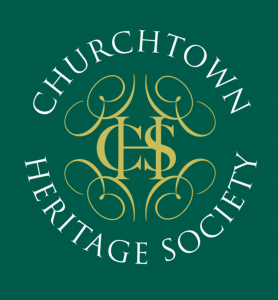When I left school I went to work at Paddy Flemings, Gurteenroe. I came to know his neighbour Den McCarthy. He had a beard at that time and it was burnt from smoking. He tied his boots with a type of light wire. At that time Paddy Fleming owned land in Annagh as well. It was where Buckleys are farming now. As a mater of fact it in that farm, our family went to school.
Next I went to work at PJ Ryans – that was season work. In September we would begin at the potatoes. There would be a lot of work involved and a lot of people employed. I picked potatoes at Patrick Irwin’s place. Eugene O’Leary’s farm would have acres to be picked. Many local people including Mary Kate, Birdie O’Flynn, Mrs Cronin and many more helped out. There were several other farms with potatoes. When I left P J Ryan I went to work for Dr Cowhey. I was there for nearly two years when she died. She died on the first of May 1951. Her coffin had to be taken into Kilgroggin in a horse and cart be-cause it was not possible to travel in the fields any other way. Before those years Loch Lomand was the famous horse. These were golden years for Churchtown house and Churchtown village. The following was a description of Loch Lomand in a stud farm di-rectory advertising sires.
”At Churchtown, Buttevant, Co.Cork, Ireland, Loch Lomand 1916, a bay or brown horse by Lomand by Desmond out of Mary Melfit by Lord Melfit Sire of Royal Canopy’s Dam, out of Bonnie Duchess”.
Among other races, Loch Lomand won the Irish Derby in a canter beating such horses as the Panter and the Grand Martin who run the grand parade to three quarters of a length at level weights in St James Palace Stakes at Ascot.
Loch Lomand is one of the grandest specimens of the high-class weight carrying thor-oughbreds at the stud, neither weight or distance was any consequence to him. The merits of this beautifully bred horse may be summed up by stating he was wonderfully fast stayer. The advent to the stud of Loch Lomand must have an exceedingly beneficial in-fluence in producing a crop of very high class stayers. In 1926 he was the sire of sixteen races. In 1927 he was the sire of thirteen winners of twenty four races including Old Orkey.
Fee for 1928-49 soverns inclusive.Apply to the stud groom, Buttevant, Co.Cork.At the end of May, Mr. Maserella bought the farm. He and Michael Gould walked up the passage as we were going down to out dinner. He said “I’ve this place bought”. It was hard to understand him. Michael Gould was better able to tell us. “What’s your hire here?” , he said. We told him three pounds ten shillings. He said he would give us ten shillings more to bring it to four pounds per week.
Dr Hartigan came in the evening. He said this place is sold and the Italian man has it bought and he is taking ye on. Dr Hartigan was married to a sister of Dr Coliheys.
I stayed for twenty-four years. The first stud horse was Riberio. Then there was a mare ‘Lady Take Time’ who ran and won a lamper in Killarney trained by Mick Cliggott and ridden by him as well. Danks was a season groom at that time. There was another stud horse called Compfield – he was the second sheer there. He produced some horses that finished up in the Swiss army. My brother Ned and I looked after the horses for a number of years. In 1970 Mich Cliggott left and the horses were sold. It is nice to see them back again.
Going back to my school days. I was taught by Mr. Tierney and Mr. Wall. I remember Mr. Wall would put pennies on the wall opposite the school. He would send us out look-ing for them. I could not understand why he did it. Then, he asked Frank Guiney this day could he dance. “I can” said Frank and he gave a demonstration. Oh, it was a grand dance. If you could see Frank doing it on the pavement. It was great to see him. My late father’s name was Edmund Egan. He was born in 1884, he went to school in Churchtown, 1890 to September 1898. He married in 1917 in Ashford, Ballach. It was a match made by old Michael O’ Donovan. My mother was buried in Kileedy – she died in 1974.




